
views
- Red string bracelets give strength, love, and luck to those who wear them.
- Many cultures believe red bracelets ward off evil spirits and protect wearers from harm.
- Meeting someone with an identical red string bracelet is said to be destiny.
- A red string bracelet must be worn on the left wrist and should be left to fall off naturally.
What does wearing a red bracelet mean?

Red string bracelets are symbols of spiritual protection. These simple but delicately beautiful bracelets mean various things across multiple cultures, but they ultimately embody one thing: safety. They are said to bring strength, love, and luck to whoever wears them, warding off the Evil Eye. The Evil Eye is a curse that inspires envy and negativity in others, sending them down a path of misfortune. The bracelet can also be a reminder of daily aspirations or goals, especially if tied with a purpose.
Cultural Meanings

Buddhism In Buddhism, Tibetan Buddhist teachers bless red string bracelets for their students. The ritual symbolizes the end of a retreat or journey, welcoming good luck and guidance to the student.

Chinese and Japanese In China and Japan, a red string bracelet represents a connection of fate. Partners, friends, or family will wear matching bracelets to symbolize their invisible bond. Some even believe that meeting someone with an identical bracelet is destiny. In Chinese culture, red is a lucky and joyous color. In Japanese culture, red is known to scare away evil spirits.

Kabbalism Red bracelets are believed to attract good luck in Kabbalism culture. The red strings ward off evil spirits and misfortune to bring peace and protection. Traditional Kabbalah bracelets are made of wool and knotted around the left hand 7 times. Once tied, the bracelets are never taken off (unless fate decides it should fall off naturally).

Hinduism In Hindu culture, red string bracelets are worn for protection and good luck. The bracelet comes in many forms, such as Kautuka, a red and yellow bracelet that wards off bad luck.

Latin America It’s tradition to put red string bracelets on newborn babies in Latin American cultures. These communities believe that the bracelets help protect the infants from evil spirits or Mal de Ojo.

Christianity In the Catholic faith, red strings are worn to ward off misfortune. Red is a symbolic color that represents the martyred saints, fire, and the blood of Christ. In Genesis 38, Tamar (Judah’s wife) gives birth and a scarlet thread is tied around one of the babies’s hands.
How do you wear a red string bracelet?

Always wear a red bracelet on your left wrist. In many cultures, the left hand is said to be the receiving hand as it’s closely connected to the heart. So, wearing a red string bracelet on your left hand channels your heart’s energy and brings the most love and protection into your life. Wear a red string bracelet until it falls off naturally. Taking it off after it’s tied can be bad luck, so let fate do the work.
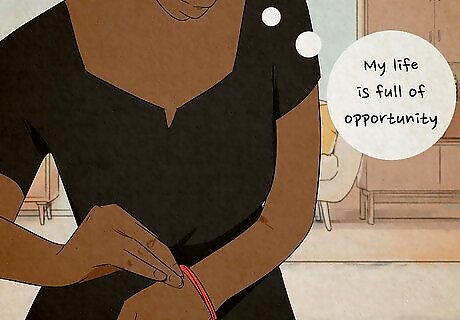
Put a red string bracelet on with intention for good luck. Many believe that wearing a red string bracelet brings good fortune and makes you lucky. So, tie your bracelet on with a purpose or intention and see if your luck increases. Your purpose or intention can be whatever you want it to be! Just think about what you hope to gain from wearing the bracelet. For instance, your intention might be something like, “I will make the soccer team” or “My life is full of opportunity.”
How to Make a Red Bracelet
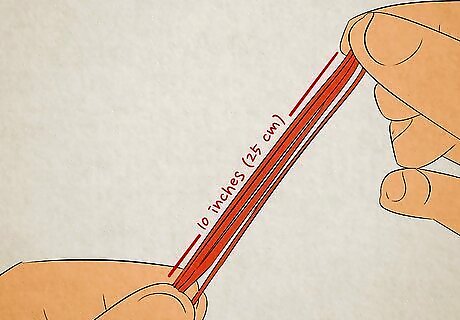
Cut 4 pieces of 10 in (25 cm) red string. The string you use for this project is entirely up to you. Use wool to make a traditional Kabbalah bracelet, opt for Chinese knot wire, or try embroidery floss. All that matters is that the string is red.

Tie the strings together with an overhand knot. Group the 4 strings together, making sure the ends meet. Then, make an overhand knot at one end of the strings. Leave about 2 in (5.1 cm) of loose thread at the end.
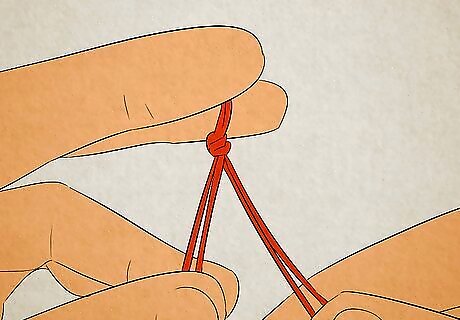
Divide the 4 strings into 2 sections. Group 2 strings together and the other 2 strings together, so you have 2 strings on the left and 2 on the right. These will be group A and B.
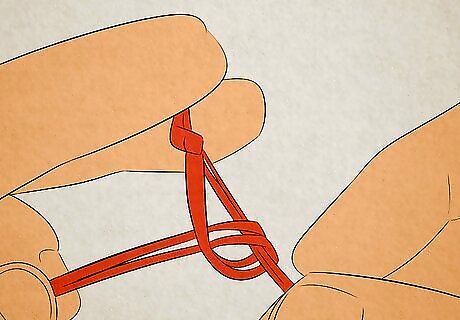
Make a forward knot with group A. Hold group B with your right hand. Create a 4 shape with group A, bringing the tail under group B. Fold group A around group B and through the 4’s opening. Pull tight.

Make a backward knot with group B. Hold group A in your left hand. Form a backward 4 shape with group B, putting the tail under group A. Bring group B up and over group A and through the backward 4’s opening. Tug your knot up to meet the previous knot.
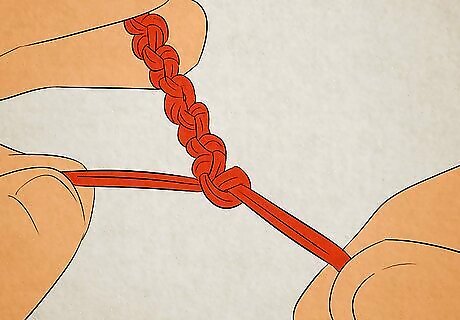
Repeat this knotting pattern until you reach the end of the bracelet. Keep alternating between forward and backward knots until there’s only about 2 in (5.1 cm) of the bracelet left. The knot pattern will give your bracelet a braided look.
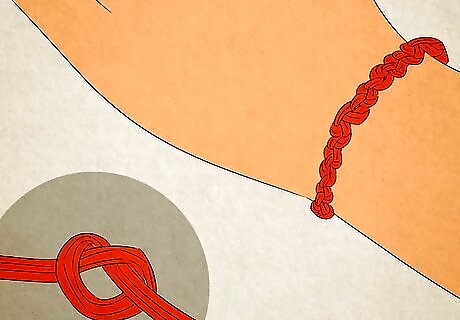
Finish the bracelet with an overhand knot. Bring the 2 groups and 4 strings together again. Make a basic overhand knot, just as you did at the start. Tie your bracelet around your wrist and see what luck comes your way. If this knotting pattern is too challenging, try braiding or twisting the strings together instead.



















Comments
0 comment